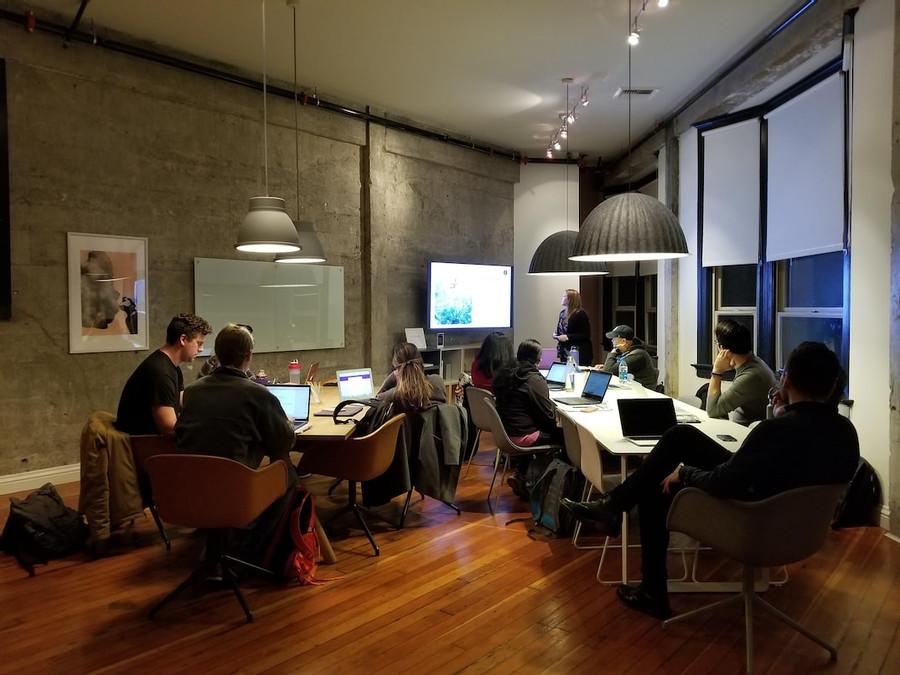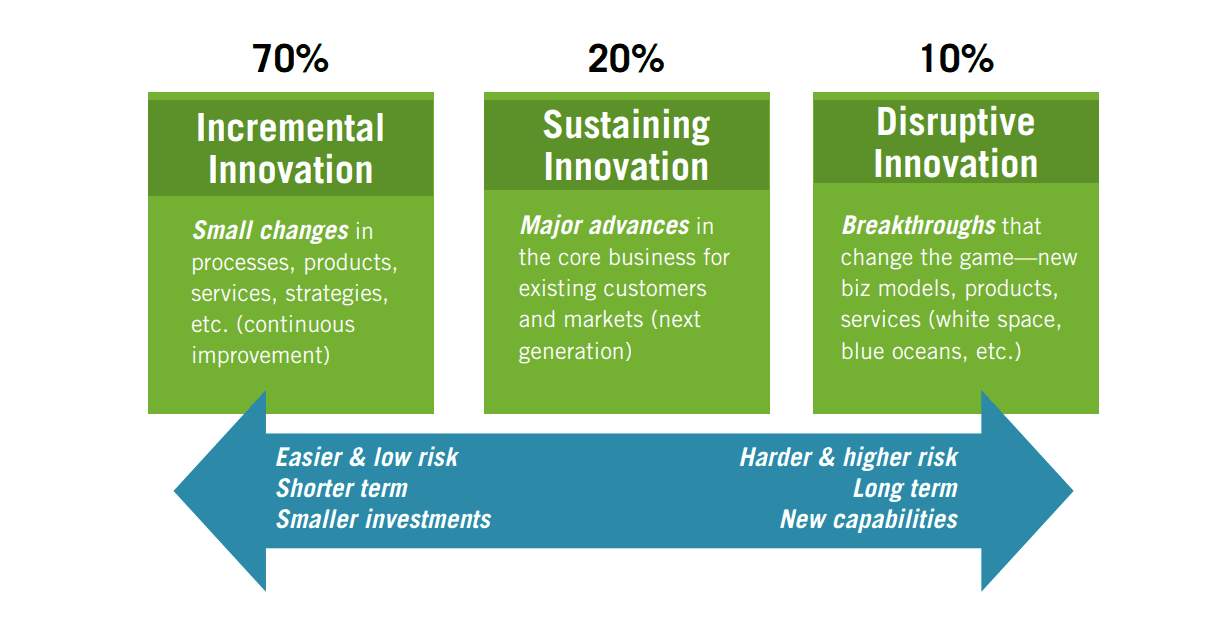Alexandria Q.'s Key Ideas from The Invisible Advantage
by Soren Kaplan
Ideas, facts & insights covering these topics:
12 ideas
·2.67K reads
10
1
Explore the World's Best Ideas
Join today and uncover 100+ curated journeys from 50+ topics. Unlock access to our mobile app with extensive features.
"It’s really not that difficult to decipher your innovation culture by looking at leadership behavior, organizational structure, business processes, metrics and incentives, rewards and recognition, and the stories and symbols that reinforce (or inhibit) innovation. By understanding the things that shape norms, values, and behavior, it becomes possible to influence them—and to create a culture of innovation."
SOREN KAPLAN
44
478 reads
A Culture of Innovation
Culture is the collection of unwritten rules, norms, and values that influence people’s behavior. When it comes to innovation, especially disruptive innovation, an organization’s culture can be either the rocket fuel or death knell of an organization’s ability to grow and thrive.
A culture of innovation is an environment that promotes freethinking, an entrepreneurial spirit, and sustainable value creation at all levels across all functions of an organization.
52
347 reads
Competitive Advantage Is Temporary
Products, services, and even business models become commodities over time. If organizations do not continually invent and reinvent their competitive advantage, they risk being disrupted into obsolescence.
Culture is the only sustainable competitive advantage. It’s the invisible secret sauce that drives employee engagement, innovation, business growth, and continuous reinvention.
47
301 reads
Unlocking The Right Kind of Innovation Culture
Every organization must unlock its innovation culture in its own unique way.
What works for Google and Apple might actually kill innovation in other companies. Effective best practices must be artfully adapted to the unique personality of your organization.
44
260 reads
"For many companies, coming up with ideas often isn’t the problem. The challenge is turning ideas into something real that delivers an impact. This is where metrics can make the difference between no ideas, lots of ideas that go nowhere, and real innovation."
SOREN KAPLAN
45
222 reads
Measure What’s Meaningful
- Metrics give us direction. Leaders set goals and measure progress; often this focus on easily measured metrics like speed, efficiency, accuracy, or profits.
- Innovative behaviors are difficult to quantify, and most companies don’t have innovation metrics. What we decide to measure determines what we get. If we don’t measure innovation, we won’t get it.
- To create an innovative culture we need to promote and measure inventive behaviors in leadership, employees, and customers. Establishing these metrics is a process unique to each company, there are no standards.
50
199 reads
Define the Outputs
Measuring profitability and the support of your customers is important, but it doesn’t tell you what specific behaviors will lead to more profits and more satisfied clients in the future. Your metrics need to define the end goal and encourage innovative practices.
Innovation metrics that define the end goal may include the number of clients who trade up to next-generation products or services, the business generated in new customer segments, or revenue from new markets. Metrics like these define goals, identify opportunities and promote innovation.
45
164 reads
Define the Inputs
Once you have defined the end goal, you need to give people specific goals to reach our larger goals. Every employee should be aware of the importance they play in achieving the company’s goals and how they share responsibility for innovation.
- Communicate trust and acceptance of new ideas. Policy and business practices should align with words that encourage trust, learning, creativity, and innovation.
- On a leadership level, you should set goals that support innovation by focusing on the future instead of on daily operations.
45
142 reads
"Measuring innovation also involves setting specific goals that will help fuel the process—the things you do internally to help you hit your targets. When you give people targets, they take on responsibility for hitting them. And in the process, they produce experiences and success stories that then reinforce more experiences. The goal is to jump-start this kind of positive feedback loop."
SOREN KAPLAN
42
140 reads
The Three Types of Innovation
Here’s a model that any organization can apply to set up its definition of innovation and take a portfolio approach to allocate its time and effort:
- 70% Incremental innovation: small changes in processes, products, services, strategies, etc.
- 20% Sustaining innovation: major advances in the core business for existing customers and markets.
- 10% Disruptive innovation: breakthroughs that change the game (new biz models, products, services).
Connecting your innovation intent to all three types of innovation helps link innovation to both the current and future direction of the organization.
52
153 reads
Every Function Should Have Its Own Definition of Innovation
Here are some examples of innovation intent statements that can do just that:
- Finance: To deliver financial insight that drives strategic business decisions, new market opportunities, and the innovation process.
- HR: To recruit and grow top talent that shapes the future of our company and that transforms the industry.
- IT: To provide tools and services that deliver insight for employees that accelerate innovation and optimize the customer experience.
45
133 reads
How Innovation Intent Shapes Culture
Without the focus an innovation intent provides, people tend to think innovation belongs to someone else (such as Research and Development) and assume it isn’t part of their job.
The lack of a thoughtfully defined innovation intent also makes it difficult for leaders to create specific programs, processes, metrics, and rewards that shape values and behavior, because specific expectations and measures of success usually aren’t clear beyond the call for “more ideas.”
43
133 reads
IDEAS CURATED BY
Alexandria Q.'s ideas are part of this journey:
Learn more about creativity with this collection
How to choose the right music for different tasks
The benefits of listening to music while working
How music affects productivity
Related collections
Discover Key Ideas from Books on Similar Topics
8 ideas
HIGH PERFORMANCE HABITS by Brendon Burchard | Animated Core Message
Productivity Game
14 ideas
6 ideas
5 Rules to Do Everything Better
The Art of Improvement
Read & Learn
20x Faster
without
deepstash
with
deepstash
with
deepstash
Personalized microlearning
—
100+ Learning Journeys
—
Access to 200,000+ ideas
—
Access to the mobile app
—
Unlimited idea saving
—
—
Unlimited history
—
—
Unlimited listening to ideas
—
—
Downloading & offline access
—
—
Supercharge your mind with one idea per day
Enter your email and spend 1 minute every day to learn something new.
I agree to receive email updates




